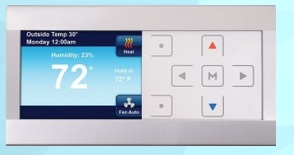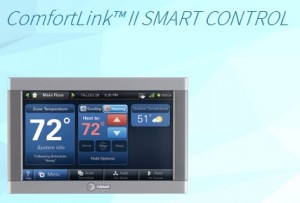Arizona Air Conditioning Mold Prevention – Minimize AC Mold Growth
Air Conditioning Mold – Critical Growth Requirements
Air Conditioning molds and mildew are classified as fungi. According to the Arizona Department of Health Services, extensive mold contamination can trigger allergic reactions, asthma episodes, infections and various other respiratory complications (1). Mold and mildew are also capable of causing serious structural damage to your home. Affected floor joists and other exposed timbers can rot, warp or crack due to moisture that tends to cultivate fungi growth.
Current reports from the FSEC Education Center define and identify nearly 100,000 species of fungi (2). But don’t panic. Fungi in general are ubiquitous to our environment. As such, humans are constantly exposed to the associated risk. Yet for healthy humans with a normally functional immune system, serious complications caused by exposure to common fungi are uncommon. However… Children, the elderly, and people who already suffer from asthmatic or allergic conditions may experience serious complications when exposed to excessive growth of fungi.
A/C Mold – Critical Growth Requirements
Whether in your heating and cooling system or due to some other source of accumulated moisture, mold growth springs forth when the following four components come together:
- Mold spores are available
- Food for the spores is available
- Environmental temperatures suit spore growth
- And moisture accumulates.
Fungi spores range in size from 3 to 40 microns – compare to the size of human hair, which ranges from 100-150 microns. Because mold spores are ubiquitous, there is no cost-effective method for complete elimination of the colonies. Any time all three of the other components for growth are available, the food supply can consist of nearly any organic substance.
Because mold grows best in temperatures that are comfortable to humans, the battle to eliminate spores is even more complicated. Yet even temperatures near to freezing cannot deter the growth of certain molds. However, one component of the growth requirement can often be controlled by human initiative. You defensive actions can help regulate the presence of moisture that accumulates in your Arizona home and Arizona air conditioning system.
Various species of fungi may respond to different levels of moisture, but the majority of mold species require relative humidity levels of 70% or better. Thus air conditioning mold prevent involves controlling where and how cool air is disbursed. On the good side: Human beings typically prefer an environment that is far below the 70% moisture threshold. Key point in air conditioning mold prevention: Reducing the availability of moisture is the best strategy for removing and killing active mold growth colonies.
3 Practices That Aid In Your Air Conditioning Mold Prevention Efforts
•Arizona Air Conditioning Operation: Keep the fan system set on AUTO. When an A/C blower runs without ceasing, the moisture that accumulates on the cooling evaporator ends up blowing back into your home. Relative humidity increases. Dehumidification decreases. Moisture accumulates. If, when even in AUTO, your HVAC blower motor continues to run long after the compressor has shut down, contact your Arizona A/C service center. A qualified tech can often disable this feature.
•Arizona Air Conditioning Selection: When options permit, or when necessity demands that you purchase a new Arizona home air conditioning system, choose equipment that makes us of a variable speed air handler. Demand optional features designed so that you can set the unit to a mode designed for enhanced moisture removal.
• Arizona Air Conditioner Sizing: Right-size your cooling equipment. Oversizing results in poor humidity management. Short on-cycles hinder moisture removal. For more information on A/C sizing and efficiency, read: Energy Efficient Central Air Conditioning.
1) http://www.azdhs.gov/phs/oeh/children/indoorair/mold/index.php
2) http://www.fsec.ucf.edu/en/consumer/buildings/basics/moldgrowth.htm





